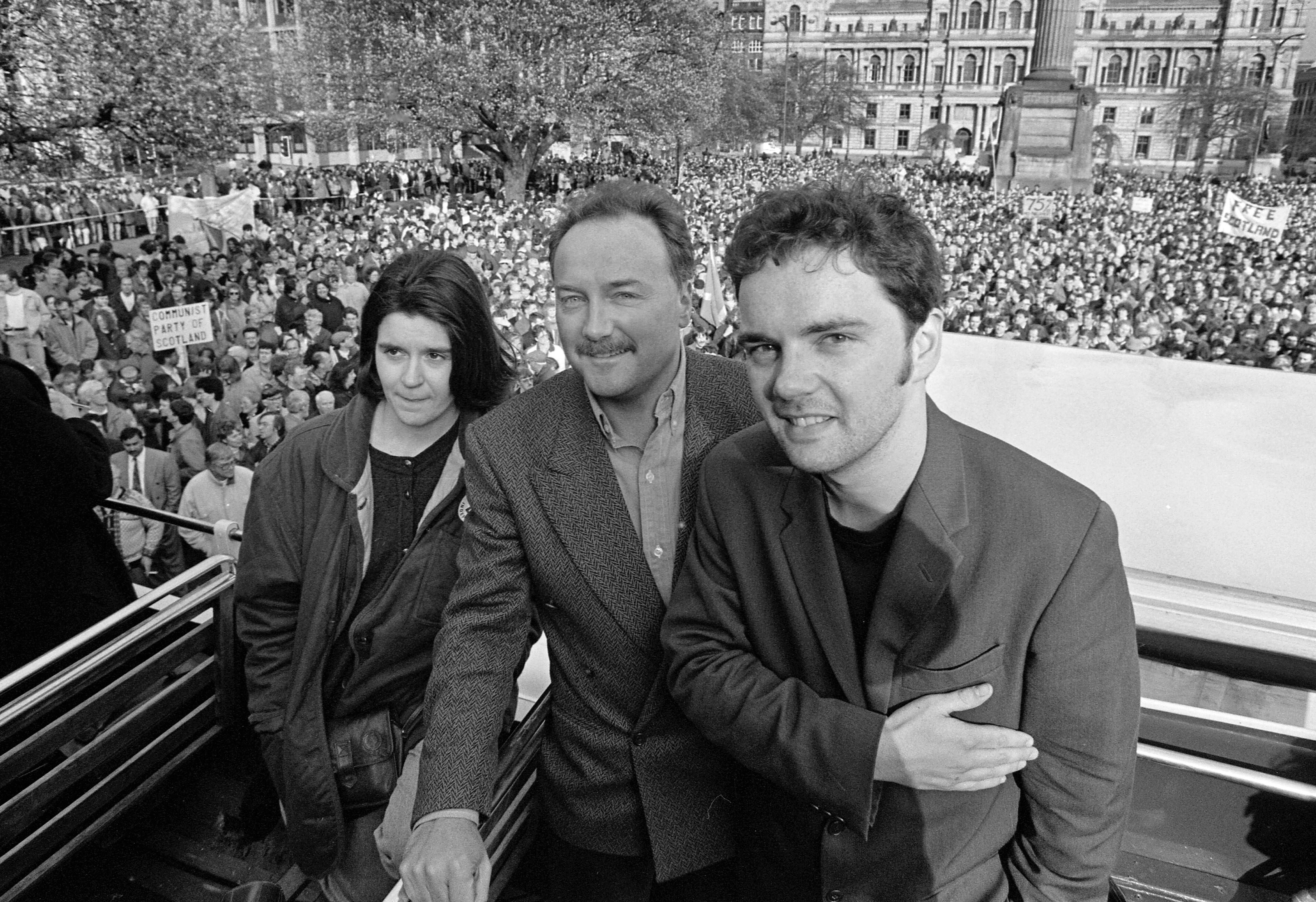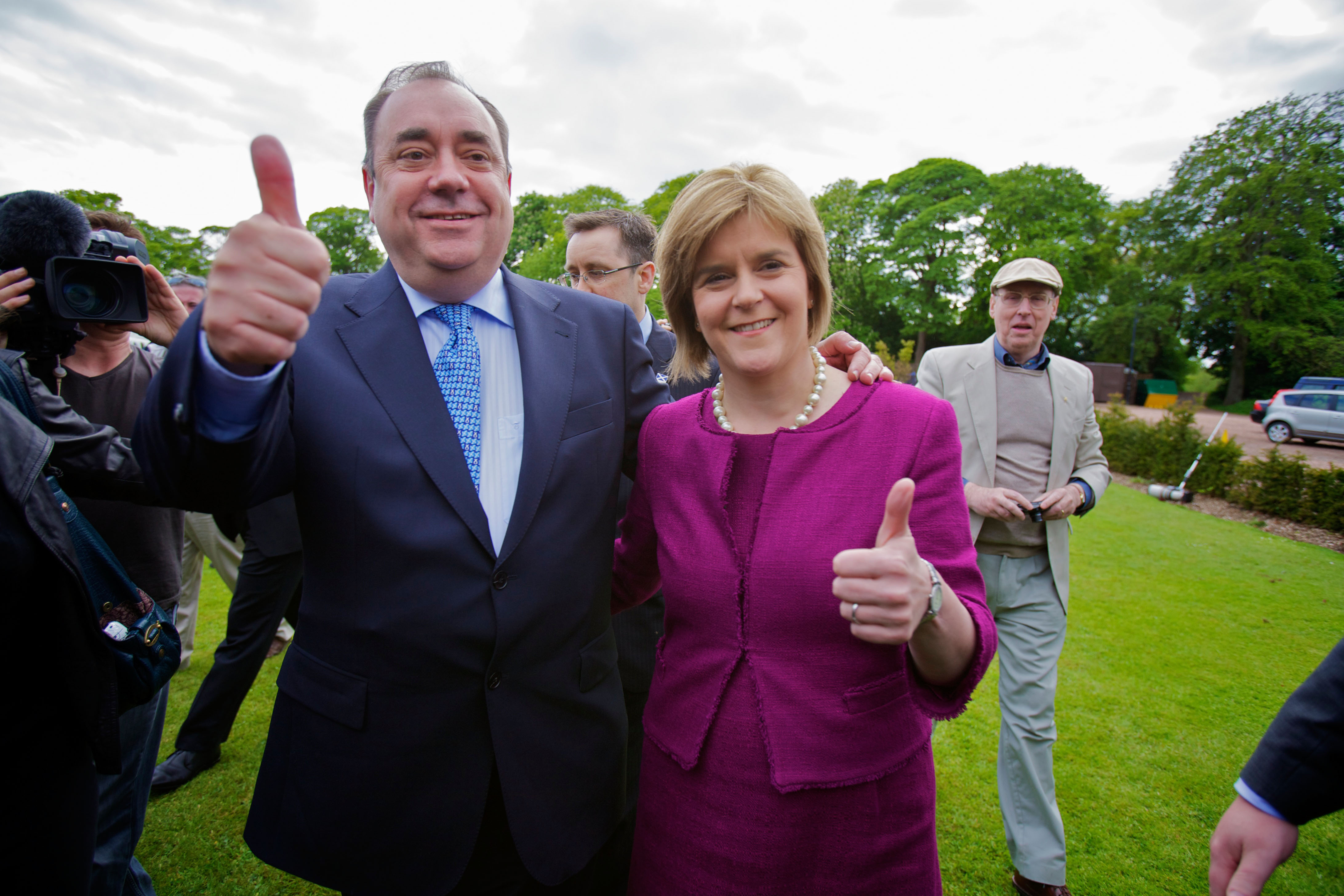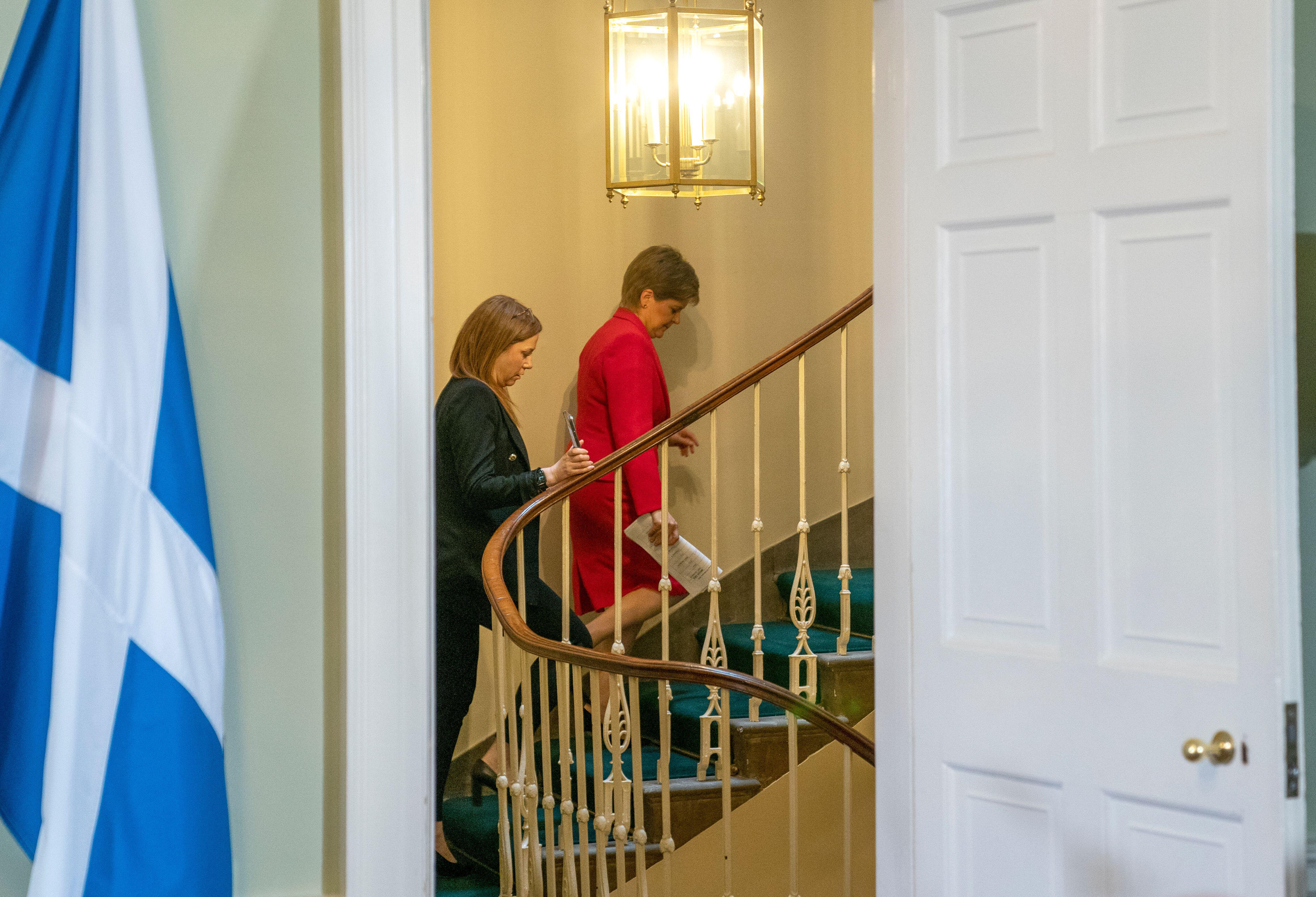Nicola Sturgeon, a politician who promised so much, has left behind a country divided and a party at war
One of the criticisms of Nicola Sturgeon in recent months has been her apparent aloofness, a hoarding of power which saw her come to rely on the advice of a small number of trusted lieutenants to the exclusion of everyone else. The result was that the first minister had become increasingly dogmatic on issues such as gender reform and turning the next general election into a de facto vote on Scottish independence.
If there was any doubt about Sturgeon’s grip on power and her unwillingness to brook dissent, then surely that must now have disappeared. In the almost two weeks since her surprise resignation, the candidates to replace Sturgeon as SNP leader have begun dismantling much of what came to define her last days in office.
Kate Forbes, who many considered the frontrunner until a series of damaging interviews knocked her campaign off course, spoke of her “serious concerns” over gender reform, while Ash Regan, a former minister who had already quit in protest at the legislation, said she would row back on the Scottish Government’s net zero agenda. Even Humza Yousaf, generally seen as the continuity candidate, suggested he would ditch the de facto referendum policy.
Sturgeon, a talented politician who promised so much, has left behind a country divided and a party at war with itself.
Things could have been so different. When Sturgeon became leader of her party following the resignation of Alex Salmond in 2014, she was riding the crest of a wave. Despite defeat in the independence referendum, momentum was with the SNP. The party had won its first parliamentary majority in 2011 and had “the wind in its sails,” according to its new leader. And if Yes had lost the argument in the referendum, it had nevertheless built a positive case for Scotland’s future outside of the United Kingdom, albeit without providing convincing answers on the currency and the economy.
Sturgeon’s selection as SNP leader (she was elected unopposed) marked the culmination of a political career which began when she joined the party while still at school. She stood at the 1992 general election, failing to win the seat of Glasgow Shettleston, and again at the 1997 election where she was beaten into second place in Glasgow Govan by Mohammed Sarwar, father of Anas.
A photo from the early 1990s shows a fresh-faced 22-year-old Sturgeon sharing a podium with George Galloway and Hue and Cry frontman Pat Kane at an independence rally in Glasgow’s George Square. And Sturgeon was a regular on TV, a rising star of the party clearly earmarked for great things despite a diffident manner understandable given her age.

She was elected to the Scottish Parliament in 1999 as a list MSP and is now one of a vanishingly small number of those at Holyrood remaining from that time. She would eventually win the Govan constituency in 2007 at her third attempt.
But if her career was on an upwards trajectory, it wasn’t without the odd spot of turbulence, such as the time in 2010 that she vouched for a constituent who was also a convicted fraudster. Sturgeon was forced to make an apology in the parliament after lobbying a court to give the man a non-custodial sentence after he admitted being a benefits cheat.
The episode was long forgotten however by 2014 when Sturgeon replaced Salmond, her political mentor, and embarked on a tour around Scotland which included appearing before an audience of thousands at the Glasgow Hydro. In the election of the following year, the SNP won 56 out of 59 seats in Scotland, leaving Labour with just one MP north of the border.
But it was that election and the Tory manifesto commitment to hold a referendum on EU membership which would prove to be a mixed blessing for Sturgeon and her party. When Britain voted narrowly to leave the following year, 62 per cent of Scots voted to remain. It appeared to be the opportunity the SNP had thought it would likely have to wait a generation for – a chance to hold a second referendum.
It now seems clear that Sturgeon misjudged the mood. While 1.7 million Scots voted to remain in the UK, more than a million others voted to leave, many of them nationalists, including former health secretary Alex Neil who said “a number” of SNP MSPs had voted for Brexit. Perhaps the bigger issue for the SNP, however, was the shambles which ensued following the vote to leave and which continues to linger nearly seven years later. The constitutional fatigue that has set in since is at least part of the explanation why only around a third of Scots want to see a referendum in 2023, something which has become an even more forlorn hope since Sturgeon’s resignation.
In 2021 came one of the defining episodes of Sturgeon’s political career when she became embroiled in the row surrounding Salmond and her government’s handling of harassment complaints against him. At the outset of the pandemic in early 2020, Salmond was cleared of all charges following a trial at the High Court in which he been accused of a series of sexual offences.
A year later, it was Sturgeon giving evidence under oath when she appeared in front of a Holyrood committee which was investigating the Scottish Government’s handling of the affair. The Scottish Government had been forced to pay Salmond more than £500,000 in costs after its investigation of complaints was found to be unlawful at a judicial review. Across two fascinating days in late February and early March of that year, the one-time political allies faced intense scrutiny as they were cross examined by a cross-party committee of MSPs while the UK media looked on.

A once fruitful political partnership and friendship was at an end, but Sturgeon’s career survived intact. She was found to have misled the Holyrood committee, but cleared of breaching the ministerial code by a separate independent inquiry. Asked the following year whether she was likely to ever speak to Salmond again, Sturgeon said: “Nope.”
Amid continued intransigence from the UK Government on the question of allowing another independence referendum, Sturgeon opted to plot a different course when she announced in June last year that the matter would be referred to the Supreme Court. It was a dramatic gamble, one born of frustration which ultimately would not pay off.
The court ruled against the Scottish Government, concluding that the matter of legislating for a referendum was reserved to Westminster. If nothing else, the decision made it clear that a political solution – not a legal one – would need to be found to the constitutional impasse, even if that did leave the first minister with very few options at her disposal.
Sturgeon’s decision to cling to her idea of turning the next general election into a de facto independence referendum – despite considerable disquiet within her own party – was just one part of her eventual undoing. Despite a string of polls showing the Yes side in the ascendancy following the Supreme Court’s decision, support for separation had begun to slip back in recent weeks.
Polling by Lord Ashcroft, which was published by this magazine, showed a 12-point lead for No, with 56 per cent of Scots saying they would vote to remain in the UK should an independence referendum be held tomorrow. Nearly a decade on from the referendum and according to that poll at least, the level of support for an independent Scotland remains largely the same as it did in 2014.
But it was on the question of the de facto referendum itself where things got even grimmer for Sturgeon, with more than two-thirds of voters against the idea. Indeed, only 44 per cent of those who voted SNP at the last general election supported it. With Labour riding high in the polls at a UK level it was a strategy which risked making the SNP look obsessive and myopic by going into a general election talking about the constitution when everyone else is worried about the cost of living and the NHS.
Ultimately however, it was the issue of gender reform that would be Sturgeon’s undoing. When Scottish Secretary Alister Jack announced the UK Government would block the Scottish Government’s Gender Recognition Reform Bill, the first minister attempted to turn it into a constitutional crisis. In truth, very few were up for that particular fight.
Famously assured and fleet of foot, Sturgeon was completely caught off guard by the case of Isla Bryson, a trans prisoner who had been jailed for the rape of two women when still known as Adam Graham. Pictures of Bryson arriving at court wearing a blonde wig and leggings almost perfectly represented the concerns around self-ID, concerns Sturgeon had memorably dismissed as “not valid”. When the issue of whether Bryson was a man or a woman was repeatedly raised by the press and at First Minister’s Questions, it became clear that Sturgeon had painted herself into a corner. There was only one way out.
In judging her legacy, it would be unfair to criticise Nicola Sturgeon for pursuing her dream of an independent Scotland. That was, after all, the very reason she had become involved in politics as an Ayrshire schoolgirl and the mandate she had been given by the Scottish people. But in pursuing that dream she did so to the detriment of nearly everything else. The first minister argues Scotland is a fairer country now than when she took office in 2014. But the Scotland of 2023 is one where the educational attainment gap remains stubbornly wide, where the sick can wait hours for an ambulance just to join a queue in A&E, and where for many young people the dream of owning their own home remains just that.

But if Sturgeon leaves behind a country that is less fair, she undoubtedly leaves behind one that is more divided. In her resignation speech she said a new leader would be better able to bring the country together: “Someone about whom the mind of almost everyone in the country is not already made up, for better or worse, someone who is not subject to quite the same polarised opinions, fair or unfair…”
The early signs from the SNP leadership race is that the new leader will have their work cut out bringing together the party, let alone the country.
As Sturgeon brought her resignation speech to an end and prepared to climb the stairs of Bute House, she was asked one last question. This time it was about a police investigation into SNP campaign finances which could yet have implications for her and her husband Peter Murrell, the party’s chief executive. It would not have been how she wanted to go out.
Holyrood Newsletters
Holyrood provides comprehensive coverage of Scottish politics, offering award-winning reporting and analysis: Subscribe